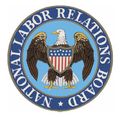In a unanimous decision, the U.S. Supreme Court ruled today that President Obama lacked the authority to make three recess appointments to the National Labor Relations Board (NLRB) while the Senate was in pro forma session in early January 2012. While affirming the decision of the D.C. Circuit that the appointments fell outside the scope of the Recess Appointments Clause, the Supreme Court came to that conclusion on different grounds. NLRB v. Noel Canning, No. 12-1281 (June 26, 2014). The decision effectively invalidates the rulings made by the three NLRB members who were improperly appointed via recess appointment.
Recess Appointments Clause
The Recess Appointments Clause gives the President the power “to fill up all Vacancies that may happen during the Recess of the Senate.” This power essentially allows the President to fill vacant federal positions without obtaining Senate confirmation of the appointments and is intended to ensure the continued functioning of the government at those times when the Senate is not in session.
At issue in the Noel Canning case was whether President Obama’s appointment of three members of the NLRB while the Senate was on a three-day intra-session break in which the Senate was in pro forma session fell within his authority under the Recess Appointments Clause. The Supreme Court said no.
Vacancies May Be Filled During Intra-Session and Inter-Session Recesses
Unlike the D.C. Circuit, the Supreme Court ruled that the Recess Appointments Clause applies during intra-session recesses (breaks in the midst of a formal Senate session) as well as during inter-session recesses (breaks between formal sessions of the Senate). The Court stated that the Senate is equally away and unavailable to conduct business during both types of breaks. The Court also looked carefully at the history of recess appointments and found that Presidents have made intra-session recess appointments going all the way back to President Andrew Johnson in 1867. During that time, the Senate has never taken any formal action to deny the validity of intra-session recess appointments. Accordingly, the Court gave great weight to the long-standing practice of allowing recess appointments during both intra- and inter-session recesses.
Recess Must Be Of Sufficient Length
Although the Recess Appointments Clause does not establish how long a recess must be in order to trigger the President’s recess appointment power, the Court held that the Senate’s recess must be of sufficient duration as to be a significant interruption of legislative business. Noting that the government’s attorney conceded that a three-day recess would be too short and that throughout history, no recess appointments had been made during an intra-session recess of less than ten days, the Court wrote that a recess of more than three days but less than ten days is presumptively too short to fall within the Clause.
Vacancies Filled As Recess Appointments Need Not Arise During the Recess
The Court interpreted the Recess Appointments Clause to allow the President to fill vacancies that existed prior to the start of the Senate’s recess. The D.C. Circuit had interpreted the Clause differently, applying only to vacancies that first come into existence during a recess. The Supreme Court chose a broader interpretation to ensure that offices that need to be filled can be filled, even if the vacancy arose before the Senate went into recess. Again, the Court looked at historical practices and found that nearly every President since James Buchanan (term: 1857-1861) has made recess appointments to pre-existing vacancies. Unwilling to counter this long-accepted practice, the Court ruled that any vacancy, whether pre-existing or one that arises during the recess, may be filled under the Recess Appointments Clause.
Applying the Clause to the 2012 NLRB Recess Appointments
The Court ruled that the President lacked the authority to appoint the three members of the NLRB in early 2012 because the Senate was still in session during that time. Although the Senate was meeting just every three days in pro forma sessions, it retained the power to conduct business. Consequently, because the Senate was in session and the three-days between its pro forma sessions was too short of a break to bring it within the scope of the Recess Appointments Clause, the President lacked the authority to make the three NLRB member appointments in January of 2012.
Big Picture – Effect of Noel Canning
There are two primary effects that will come out of today’s Noel Canning decision. First, the NLRB rulings that were made by the improperly appointed members will need to be revisited. Numerous challenges have already been made in some of the affected cases and the current NLRB, which now has five Senate-confirmed members, may need to revisit those rulings.
Second, the future of Presidential recess appointments will hinge on the length of a Senate recess. Political analysts are already stating that both the House and Senate have mechanisms to force the Senate out of a recess into a pro forma session so if those mechanisms are exercised, Congress could limit or block a President’s ability to make recess appointments. We will likely learn a great deal about the scheduling powers of Congress in the days to come.


